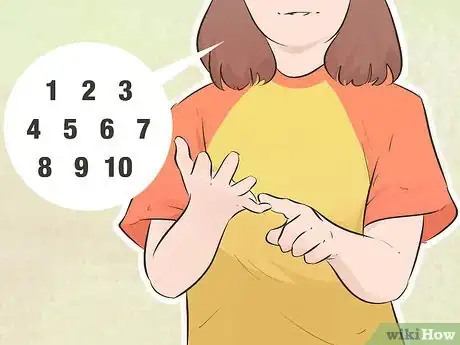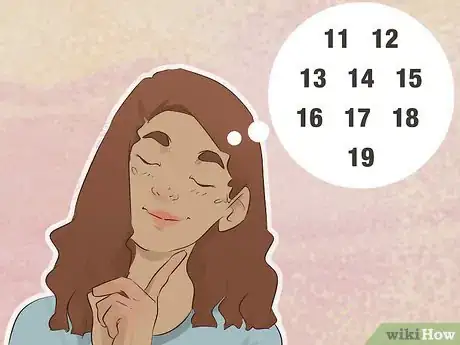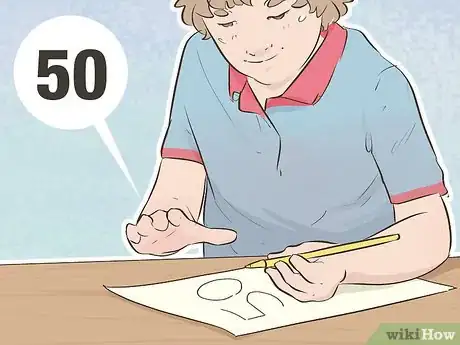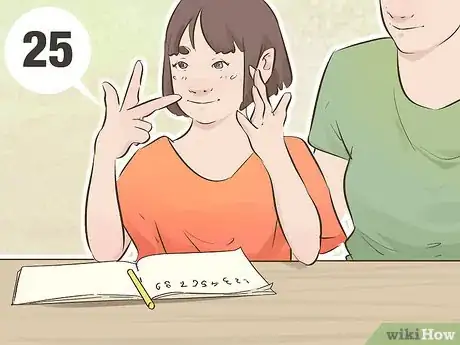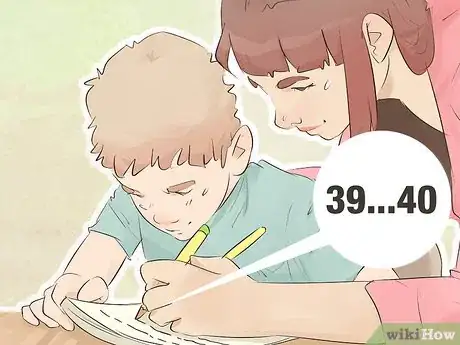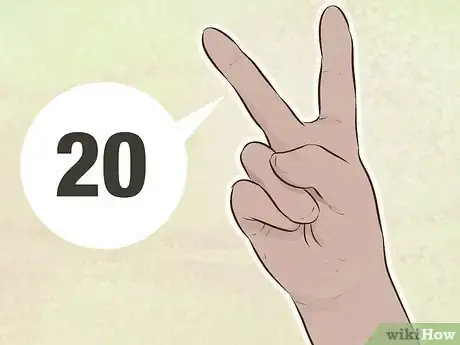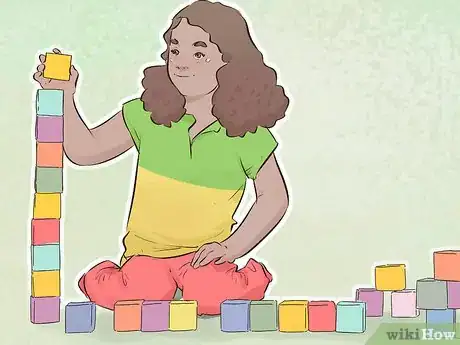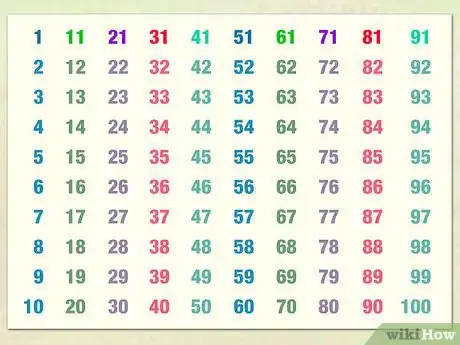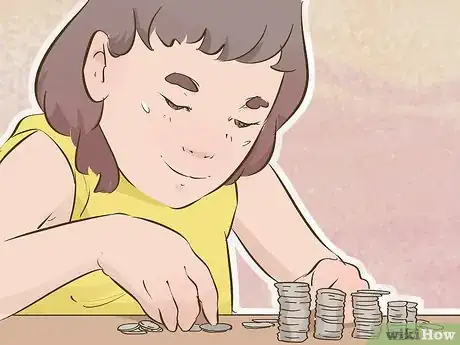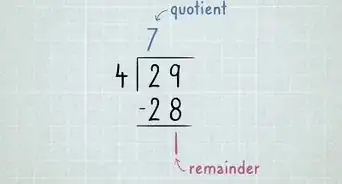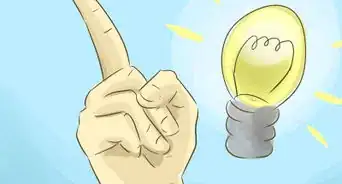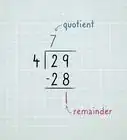This article was co-authored by wikiHow staff writer, Amy Bobinger. Amy Bobinger has been a writer and editor at wikiHow since 2017. She especially enjoys writing articles that help people overcome interpersonal hurdles but frequently covers a variety of subjects, including health and wellness, spirituality, gardening, and more. Amy graduated with a B.A. in English Lit from Mississippi College in 2011 and now lives in her hometown with her husband and two young sons.
There are 9 references cited in this article, which can be found at the bottom of the page.
This article has been viewed 22,421 times.
Learn more...
Learning to count is a big deal. It opens the door to learning basic addition and subtraction, and it’s typically a requirement for being able to complete kindergarten or 1st grade. Most children are able to count to 100 by the time they turn 6, although some will need a little more help.[1] Luckily, there are lots of fun activities that can help you practice this skill!
Steps
Counting by 1s
-
1Practice counting from 1-10. Before you can move on to bigger numbers, you have to start with the basics. Count the sequence 1, 2, 3, 4, 5, 6, 7, 8, 9, and 10 over and over until the child feels very comfortable.[2]
Tip: Try counting the child’s fingers or toes for a fun way to practice these numbers!
-
2Memorize the numbers 11-19. Once you get to 20, counting is just a matter of repeating the same pattern. However, the numbers from 11-19 are a little different, and most children will benefit from a little extra practice before they can master them. Make sure the child can comfortably count to 19 or 20 before you move on.[3]
- Help the child learn the words for each of these numbers: 11, 12, 13, 14, 15, 16, 17, 18, and 19.
- For instance, 21 and 31 are both “twenty-one” and “thirty-one.” However, the number 11 is “eleven,” which can be confusing to a small child.
Advertisement -
3Learn multiples of 10. It’s much easier to count to 100 if you can help the child think of it as a pattern of 10s, rather than a huge list of 100 numbers. Once the child can easily count from 1-19, move on to counting in multiples of 10 until you reach 100.[4]
- These numbers are 10, 20, 30, 40, 50, 60, 70, 80, 90, and 100.
-
4Move on to practicing 20-29, 30-39, and so on. Once you’ve mastered 1-10 and counting to 100 by 10s, filling in the blanks will be much easier. It will still take a lot of practice, but you’ll have the foundation in place. Start by practicing the numbers in the 20s, then the 30s, and continue until the child can count all the way to 100.[5]
- For instance, you’d teach the child to count 21, 22, 23, 24, 25, 26, 27, 28, and 29, then teach them that after 29 comes 30. They can then start the sequence again.
-
5Put a special emphasis on the 9s. When counting by 1s, kids will often get to a number ending in 9, then will get stuck trying to remember which set of numbers comes next. This can occur even if they’re confident counting by 10s all the way to 100, so be ready to help coach them if they need it.
- For instance, the child might easily count "31, 32, 33..." then get to 39 and struggle to remember that 40 comes next.[6]
- When the child goes from 99 to 100, make sure to clap or cheer so they know they did a good job!
Finding Creative Ways to Practice
-
1Have the child use their fingers as a reminder of their "tens" place. Sometimes kids can forget where they’re at when they’re counting. To help them stay on track, have them use their fingers to keep up with the section they’re on.[7]
- For instance, the child would hold up 1 finger as they count from 10-19, 2 fingers as they count from 20-29, and so on, all the way to 10 fingers when they reach 100!
-
2Have the child count 100 small objects. Gather 100 of a small object that’s easy to count, like cotton balls, paper clips, or cereal pieces. The child can count the objects, place them on a work sheet, or group them together to learn skip counting.
- For instance, you could group the objects in 2s, 4s, 5s, 10s, and 25s, which all divide evenly into 100.
- This is a good exercise for both visual and hands-on learners.
- if you use pieces of food, remind the kids not to eat them until you're finished counting!
-
3Make worksheets to practice counting. There are a variety of different worksheet styles you can use, all of which can be useful visual aids. One of the most popular is to create a 10x10 grid, with the numbers 1, 11, 21, 31, 41, 51, 61, 71, 81, and 91 across the top. Then, in the columns below each number, the child can write out the 1s for each section. [8]
- In the second column, for instance, they’d write 11, 12, 13, 14, 15, 16, 17, 18, 19, and 20.
- The last number of the last column will be 100.
- You can also make strips of paper with 10 spaces, with a multiple of 10 written across the top. For instance, on the strip labeled 40, the child would fill in 41, 42, 43, 44, 45, 46, 47, 48, and 49.
Want a more interactive experience? Try drawing a grid with sidewalk chalk!
-
4Sing your numbers. If you’re working with a child who’s having trouble remembering their numbers, try turning them into a song. Music can be a great memorization tool, and the child can sing the song to themselves if they get stuck while they’re trying to count.[9]
- You can make up your own song if you like, but there are also tons of fun counting songs on YouTube that you can search for. Find one with a catchy beat!
-
5Use games, apps, and puzzles for hands-on learning. If you’re helping a hands-on learner, they might do best if you can make counting into a fun activity, like a game. You can make your own game out of a worksheet and small objects, or you can search online for kid-friendly apps, puzzles, and books that help teach counting.[10]
- To make your own game, try calling out numbers Bingo-style. Have the child find the numbers on the worksheet and cover them up with one of their objects. Keep going until all 100 spaces are covered!
-
6Count everything you can find. Learning numbers takes a lot of practice. Any time you get a chance, find something that you can count together. If the child forgets a number, gently coach them, but try to let them count on their own as much as possible.
- Try taking a walk where you count how many steps you take. You could also count the cars you pass when you’re driving in the car, or the number of green beans on your plates at dinner.
- If you’re a teacher, try counting the number of posters on the wall or all of the chairs in the room.
- You don’t have to count to 100 every time. Try to pick a different number of objects to count each time. Any time you practice counting, you’ll be working toward being able to reach 100 eventually.
References
- ↑ https://www.stanfordchildrens.org/en/topic/default?id=the-growing-child-school-age-6-to-12-years-90-P02278
- ↑ https://www.understood.org/en/articles/math-skills-what-to-expect-at-different-ages
- ↑ https://scholarscompass.vcu.edu/cgi/viewcontent.cgi?article=1302&context=jmsce_vamsc
- ↑ https://dera.ioe.ac.uk/778/1/735bbb0036bed2dcdb32de11c7435b55.pdf
- ↑ https://www.cdc.gov/csels/dsepd/ss1978/lesson3/section1.html
- ↑ https://prek-math-te.stanford.edu/counting/what-children-know-and-need-learn-about-counting
- ↑ https://dreme.stanford.edu/news/math-your-fingertips-easy-counting-activities-using-number-gestures
- ↑ https://www.k5learning.com/free-preschool-kindergarten-worksheets/numbers-counting
- ↑ https://raisingchildren.net.au/babies/play-learning/learning-ideas/early-numeracy
About This Article
To count to 100, start by counting to 10. One, two, three, four, five, six, seven, eight, nine, ten. Then, after 10, count to 20. Count: eleven, twelve, thirteen, fourteen, fifteen, sixteen, seventeen, eighteen, nineteen, twenty. The rest of the counting goes like this: twenty-one, twenty-two, twenty-three, twenty-four, twenty-five, twenty-six, twenty-seven, twenty-eight, twenty-nine. You can see that we're saying the number twenty, and the numbers you used to count to 10! The same goes for the rest of the numbers. The next set are the thirties: thirty-one, thirty-two, thirty-three, thirty-four, thirty-five, thirty-six, thirty-seven, thirty-eight, thirty-nine. Then the forties: forty-one, forty-two, forty-three, forty-four, forty-five, forty-forty-five, forty-six, forty-seven, forty-eight, forty-nine. To count the fifties, it's: fifty-one, fifty-two, fifty-three, fifty-four, fifty-five, fifty-six, fifty-seven, fifty-eight, fifty-nine. Next come the sixties: sixty-one, sixty-two, sixty-three, sixty-four, sixty-five, sixty-six, sixty-seven, sixty-eight, and sixty-nine. To count the seventies, count: seventy-one, seventy-two, seventy-three, seventy-four, seventy-five, seventy-six, seventy-seven, seventy-eight, seventy-nine. The next set are the eighties: eighty-one, eighty-two, eighty-three, eighty-four, eighty-five, eighty-six, eighty-seven, eighty-eight, eighty-nine. Finally, finish with the nineties: ninety-one, ninety-two, ninety-three, ninety-four, ninety-five, ninety-six, ninety-seven, ninety-eight, ninety-nine. One hundred. You did it! Read on to learn how to help a child learn to count by using songs, worksheets, and more!
